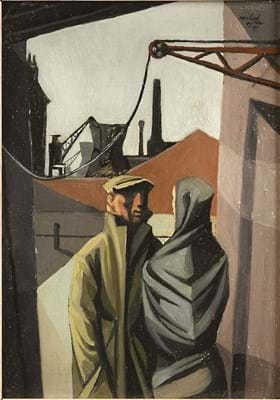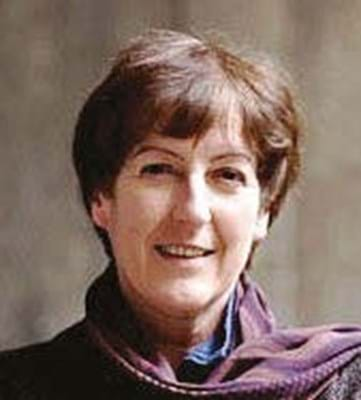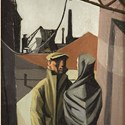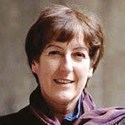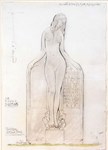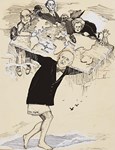Hertfordshire County Council was responsible for the first school built in post-war Britain: Barclay School, Stevenage, opened in 1949 with a magnificent Family Group by Henry Moore, cast in bronze, in front of its main entrance.
This was not the only piece of Contemporary sculpture commissioned by Sir John Newsom, Hertfordshire’s chief education officer, for educational institutions.
In my recent pre-sale talk for Cheffins’ The Curated Eye auction, the first slide showed a period photograph of Moore’s work outside Barclay School, as a reminder of just how progressive developments in education had been at this time.
Interestingly, the German architect Walter Gropius, who had come to Britain in 1934, hugely admired Moore and had wanted one of his sculptures to ornament Impington Village College, which he and Maxwell Fry designed in 1939. This was never achieved, perhaps because war broke out just two weeks after the school opened.
Both Newsom and his counterpart in Cambridgeshire, Henry Morris, who was responsible for Impington, built up loan collections for use in schools.
A need for art
What facilitated this activity were the reasonably priced Pictures for Schools exhibitions, held annually in a major London venue from 1947-69.
The person behind this scheme was the artist Nan Youngman, who was familiar with the art world, had a good eye and understood what was needed in schools.
Many classrooms in the 1940s had scant art on the walls and what was visible were usually faded black and white photographs or prints of Italian Renaissance art. Youngman’s ambition was to reanimate classrooms with affordable Contemporary art that conveyed visual interest, modern energy, colour, form, rhythm and a touch of wit. In other words, she wanted to let in the present day.
When the annual Pictures for Schools exhibitions ended, Newsom and his art organiser, Audrey Martin, recognising the value of original work, went on buying art for the Hertfordshire collection from the popular Leicester Galleries, and also the Leger and Redfern Galleries. Thus they continued to accumulate a fine collection of mid-to late-20th century British art.
But times move on, curriculums change and children now experience art through trips to galleries or through modern technology.
Hertfordshire’s loan collection has been disbanded. Some pictures have been gifted to schools and to local organisations. The sale of a good part of the collection aroused a great deal of interest and the funds raised will help towards restoration and conservation of what has been kept.
Framing a talk around works in the sale made it possible to identify some recognisable strands in British art.
There was no Sickert in the sale, but his interest in compositions, cropped like a snapshot, in reflected light and dim but rich harmonies of colour, were all found in Sylvia Gosse’s Red Lion Square. Initially Sickert’s pupil, Gosse went on to run a school of painting and etching with Sickert, under both their names, and a claim has been made by the Sickert scholar, Wendy Baron, that Gosse had some influence on his late work.
Michael Ayrton was initially associated with the Neo-Romantics and a theatrical element remained always to the fore in his work. The small but beautifully intense oil painting, entitled Encounter No 1, from 1947, reflected the new formal rigour that entered British art after an exhibition of recent work by Matisse and Picasso went on show at the V&A in the winter of 1945-46.
The catalogue entry for this work mentioned Ayrton’s visit to Italy in 1947 and the fresh impact made on him by Masaccio and Piero della Francesca. But awareness of John Minton’s dockland scenes may also have inspired the background to the intense meeting that binds together the foreground figures.
Growing demand
This Cheffins sale was also notable for the inclusion of two Frances Hodgkins watercolours, her primary medium during the first half of her career. Highly sought after by New Zealand collectors, she is still not adequately recognised in this country, but this will change later this year, with a forthcoming exhibition and book titled Frances Hodgkins: European Travels.
Similarly with Joan Eardley, there is a growing demand to see more of her work in England, and not just in Scotland. The high price paid for her drawing, A Young Boy Reading, is an indication of this. It was also good to see in this sale a magnificent still-life by Robert MacBryde, showing an oil lamp and basket of eggs on a table. Since the exhibition The Two Roberts, showing work by him and Robert Colquhoun in Edinburgh a couple of years ago, he has fully emerged from under the shadow of his partner.
This sale also gave me an opportunity to praise its rich array of prints, by Edward Bawden and his son, by Michael Rothenstein, Valerie Thornton and others, as well as some undeniable gems by little-known artists such as Jack D Bent and Lydia Kemeny.
And it kicked off with an Adrian Heath, at a transitional moment, seeking to merge his admiration for Braque with Euston Road gravity. Not surprisingly it sold at a price that almost tripled its estimate.

